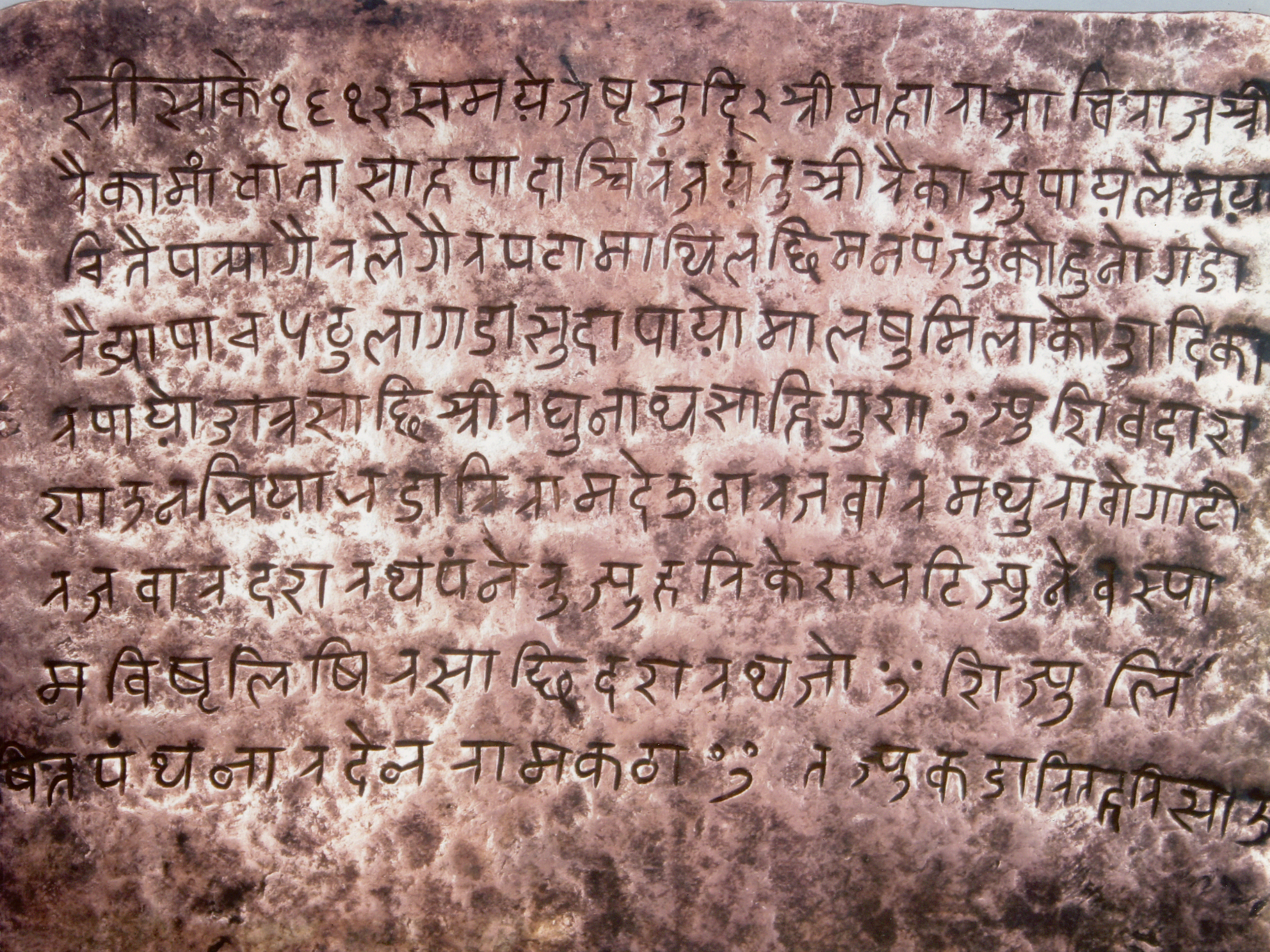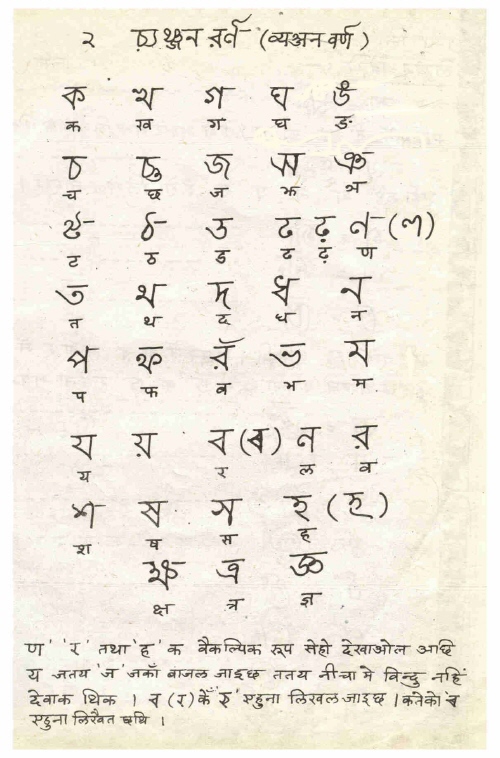|
Prasauni
Prasauni (Nepali: ŗ§™ŗ•ćŗ§įŗ§łŗ•Ćŗ§®ŗ•Ä) is a rural municipality in Bara District in Province No. 2 of Nepal Nepal (; ne, ŗ§®ŗ•áŗ§™ŗ§ĺŗ§≤ ), formerly the Federal Democratic Republic of Nepal ( ne, ŗ§łŗ§ôŗ•ćŗ§ėŗ•Äŗ§Į ŗ§≤ŗ•čŗ§ēŗ§§ŗ§ĺŗ§®ŗ•ćŗ§§ŗ•ćŗ§įŗ§Ņŗ§ē ŗ§óŗ§£ŗ§§ŗ§®ŗ•ćŗ§§ŗ•ćŗ§į ŗ§®ŗ•áŗ§™ŗ§ĺŗ§≤ ), is a landlocked country in South Asia. It is mai .... It was formed in 2016 occupying current 7 sections (wards) from previous 7 former VDCs. It occupies an area of 20.24 km2 with a total population of 25,478. References * Populated places in Bara District Rural municipalities of Nepal established in 2017 Rural municipalities in Madhesh Province {{Bara-geo-stub ... [...More Info...] [...Related Items...] OR: [Wikipedia] [Google] [Baidu] |
Bara District
Bara District ( ne, ŗ§¨ŗ§ĺŗ§įŗ§ĺ ŗ§úŗ§Ņŗ§≤ŗ•ćŗ§≤ŗ§ĺ ) is one of the seventy‚Äďseven districts of Nepal, located in the western part of the Madhesh Province. The district is third richest district in Nepal after Kathmandu and Morang with 3.3% share of total GDP of Nepal and highest per capita income in Madhesh province. Kalaiya serves as the district's headquarter. Bakaiya, Jamuniya, Pasaha, Dudhaura and Bangari are the main rivers of Bara. The main languages spoken in the district are Bhojpuri, Bajjika, Tharu and Nepali. History Simraungadh is major part of Bara district. It is a historical place in Nepal and famous for agricultural products. Here people grow wheat, maize, and various green vegetables (cauliflower, tomato, banana (raw), beetroot, bitter gourd, bottle gourd, brinjal, cabbage, carrot, cauliflower, chilli (green), chilli (dry red), coriander leaves, cucumber, potato and so on). Bara district is famous for the Gadhimai Temple, particularly as every five ... [...More Info...] [...Related Items...] OR: [Wikipedia] [Google] [Baidu] |
Gaupalika
A gaunpalika ( ne, ŗ§óŗ§ĺŗ§Čŗ§Āŗ§™ŗ§ĺŗ§≤ŗ§Ņŗ§ēŗ§ĺ, lit=rural municipality, translit=GńĀumŐźpńĀlikńĀ ) is an administrative division in Nepal. The Ministry of Federal Affairs and Local Development dissolved the existing village development committees and announced the establishment of this new local body. It is a sub-unit of a district. There are currently 460 rural municipalities. History The village development committee was the previous governing body of villages in Nepal. They were replaced on 10 May 2017 by the rural municipalities which were formed by combining different VDCs. The decision was taken by the cabinet of Nepal after modifications in the report proposed by the Local Level Restructuring Commission. Initially 481 rural municipalities were formed but it was later changed to 460 municipalities. According to the Ministry of Federal Affairs and Local Development the new bodies were to be called "rural municipality" and not "village council" which was the literal transl ... [...More Info...] [...Related Items...] OR: [Wikipedia] [Google] [Baidu] |
Nepal Standard Time
Nepal Standard Time (NPT) is the time zone for Nepal. With a time offset from Coordinated Universal Time (UTC) of UTC+05:45 all over Nepal, it is one of only three time zones with a 45-minute offset from UTC.The others are Chatham Island Standard Time, with an offset of UTC+12:45, and the unofficial Australian Central Western Time, with an offset of UTC+08:45. NPT is an approximation of Kathmandu mean time, which is 5:41:16 ahead of UTC. The standard meridian passes through the peak of Gaurishankar mountain about east of Kathmandu. Nepal used local solar time until 1920, in Kathmandu UTC+05:41:16. In 1920, Nepal adopted Indian Standard Time Indian Standard Time (IST), sometimes also called India Standard Time, is the time zone observed throughout India, with a time offset of UTC+05:30. India does not observe daylight saving time or other seasonal adjustments. In military and av ..., UTC+05:30. In 1986 Nepal advanced their clocks by 15 minutes, giving them a ti ... [...More Info...] [...Related Items...] OR: [Wikipedia] [Google] [Baidu] |
Populated Places In Bara District
Population typically refers to the number of people in a single area, whether it be a city or town, region, country, continent, or the world. Governments typically quantify the size of the resident population within their jurisdiction using a census, a process of collecting, analysing, compiling, and publishing data regarding a population. Perspectives of various disciplines Social sciences In sociology and population geography, population refers to a group of human beings with some predefined criterion in common, such as location, race, ethnicity, nationality, or religion. Demography is a social science which entails the statistical study of populations. Ecology In ecology, a population is a group of organisms of the same species who inhabit the same particular geographical area and are capable of interbreeding. The area of a sexual population is the area where inter-breeding is possible between any pair within the area and more probable than cross-breeding with i ... [...More Info...] [...Related Items...] OR: [Wikipedia] [Google] [Baidu] |
Village Development Committee (Nepal)
A village development committee ( ne, ŗ§óŗ§ĺŗ§Čŗ§Ā ŗ§Ķŗ§Ņŗ§ēŗ§ĺŗ§ł ŗ§łŗ§ģŗ§Ņŗ§§ŗ§Ņ; ''gńĀumŐź vikńĀs samiti'') in Nepal was the lower administrative part of its Ministry of Federal Affairs and Local Development. Each district had several VDCs, similar to municipalities but with greater public-government interaction and administration. There were 3,157 village development committees in Nepal. Each village development committee was further divided into several wards ( ne, ŗ§Ķŗ§°ŗ§ĺ) depending on the population of the district, the average being nine wards. Purpose The purpose of village development committees is to organise village people structurally at a local level and creating a partnership between the community and the public sector for improved service delivery system. A village development committee has status as an autonomous institution and authority for interacting with the more centralised institutions of governance in Nepal. In doing so, the village development c ... [...More Info...] [...Related Items...] OR: [Wikipedia] [Google] [Baidu] |
Gaunpalika
A gaunpalika ( ne, ŗ§óŗ§ĺŗ§Čŗ§Āŗ§™ŗ§ĺŗ§≤ŗ§Ņŗ§ēŗ§ĺ, lit=rural municipality, translit=GńĀumŐźpńĀlikńĀ ) is an administrative division in Nepal. The Ministry of Federal Affairs and Local Development dissolved the existing village development committees and announced the establishment of this new local body. It is a sub-unit of a district. There are currently 460 rural municipalities. History The village development committee was the previous governing body of villages in Nepal. They were replaced on 10 May 2017 by the rural municipalities which were formed by combining different VDCs. The decision was taken by the cabinet of Nepal after modifications in the report proposed by the Local Level Restructuring Commission. Initially 481 rural municipalities were formed but it was later changed to 460 municipalities. According to the Ministry of Federal Affairs and Local Development the new bodies were to be called "rural municipality" and not "village council" which was the literal tra ... [...More Info...] [...Related Items...] OR: [Wikipedia] [Google] [Baidu] |
Nepali Language
Nepali (; , ) is an Indo-Aryan language native to the Himalayas region of South Asia. It is the official, and most widely spoken, language of Nepal, where it also serves as a '' lingua franca''. Nepali has official status in the Indian state of Sikkim and in the Gorkhaland Territorial Administration of West Bengal. It is spoken by about a quarter of Bhutan's population. Nepali also has a significant number of speakers in the states of Arunachal Pradesh, Assam, Himachal Pradesh, Manipur, Meghalaya, Mizoram and Uttarakhand. In Myanmar it is spoken by the Burmese Gurkhas. The Nepali diaspora in the Middle East, Brunei, Australia and worldwide also use the language. Nepali is spoken by approximately 16 million native speakers and another 9 million as a second language. Nepali is commonly classified within the Eastern Pahari group of the Northern zone of Indo-Aryan. The language originated from the Sinja Valley, Karnali Province then the capital city of the Khasa Ki ... [...More Info...] [...Related Items...] OR: [Wikipedia] [Google] [Baidu] |
Tharu Language
The Tharu ( Tharu: ŗ§•ŗ§ĺŗ§įŗ•Ā, hi, ŗ§•ŗ§įŗ•Āŗ§Ķŗ§ĺ) or Tharuhat ( ne, ŗ§•ŗ§įŗ•Āŗ§Ļŗ§ü) languages are any of the Indo-Aryan languages spoken by the Tharu people of the Terai region in Nepal, and neighboring regions of Uttarakhand, Uttar Pradesh and Bihar in India. Tharu languages are spoken in the Tharu community. This languages are similar to other neighboring languages. Tharu language is one of the major language spoken in Nepal. Although their own precise classification within Indo-Aryan remains uncertain, Tharu languages have superficial similarities with neighbouring languages such as Kumaoni, Awadhi, Maithili, Bengali, Rajbanshi and Bhojpuri. The lexicon of certain Tharu households is indicative of an archaic, 'indigenous' substratum, potentially predating both Sino-Tibetan or Indo-Aryan settlement. Tharu languages appear to be transitional within the context of Indo-Aryan. Chitwania Tharu is spoken by approximately 250,000 speakers east of the Gandaki River, in an ... [...More Info...] [...Related Items...] OR: [Wikipedia] [Google] [Baidu] |
Maithili Language
Maithili () is an Indo-Aryan language spoken in parts of Languages of India, India and Languages of Nepal, Nepal. It is native to the Mithila region, which encompasses parts of the Indian states of Bihar and Jharkhand as well as Nepal's eastern Terai. It is one of the 22 Eighth Schedule to the Constitution of India, officially recognised languages of India and the second most spoken Languages of Nepal, Nepalese language in Nepal. The language is predominantly written in Devanagari, but there were two other historically important scripts: Tirhuta script, Tirhuta, which has retained some use until the present, and Kaithi script, Kaithi. Official status In 2003, Maithili was included in the 8th Schedule, Eighth Schedule of the Indian Constitution as a recognised language of India, Indian language, which allows it to be used in education, government, and other official contexts in India. Maithili language is included as an optional paper in the Union Public Service Commission, UP ... [...More Info...] [...Related Items...] OR: [Wikipedia] [Google] [Baidu] |
Christians
Christians () are people who follow or adhere to Christianity, a monotheistic Abrahamic religion based on the life and teachings of Jesus Christ. The words ''Christ'' and ''Christian'' derive from the Koine Greek title ''Christ√≥s'' (őßŌĀőĻŌÉŌĄŌĆŌā), a translation of the Biblical Hebrew term '' mashiach'' (◊ě÷ł◊©÷ī◊Ā◊ô◊ó÷∑) (usually rendered as ''messiah'' in English). While there are diverse interpretations of Christianity which sometimes conflict, they are united in believing that Jesus has a unique significance. The term ''Christian'' used as an adjective is descriptive of anything associated with Christianity or Christian churches, or in a proverbial sense "all that is noble, and good, and Christ-like." It does not have a meaning of 'of Christ' or 'related or pertaining to Christ'. According to a 2011 Pew Research Center survey, there were 2.2 billion Christians around the world in 2010, up from about 600 million in 1910. Today, about 37% of all Christians live in the A ... [...More Info...] [...Related Items...] OR: [Wikipedia] [Google] [Baidu] |
Nepal
Nepal (; ne, ŗ§®ŗ•áŗ§™ŗ§ĺŗ§≤ ), formerly the Federal Democratic Republic of Nepal ( ne, ŗ§łŗ§ôŗ•ćŗ§ėŗ•Äŗ§Į ŗ§≤ŗ•čŗ§ēŗ§§ŗ§ĺŗ§®ŗ•ćŗ§§ŗ•ćŗ§įŗ§Ņŗ§ē ŗ§óŗ§£ŗ§§ŗ§®ŗ•ćŗ§§ŗ•ćŗ§į ŗ§®ŗ•áŗ§™ŗ§ĺŗ§≤ ), is a landlocked country in South Asia. It is mainly situated in the Himalayas, but also includes parts of the Indo-Gangetic Plain, bordering the Tibet Autonomous Region of China to the north, and India in the south, east, and west, while it is narrowly separated from Bangladesh by the Siliguri Corridor, and from Bhutan by the Indian state of Sikkim. Nepal has a diverse geography, including fertile plains, subalpine forested hills, and eight of the world's ten tallest mountains, including Mount Everest, the highest point on Earth. Nepal is a multi-ethnic, multi-lingual, multi-religious and multi-cultural state, with Nepali as the official language. Kathmandu is the nation's capital and the largest city. The name "Nepal" is first recorded in texts from the Vedic period of the ... [...More Info...] [...Related Items...] OR: [Wikipedia] [Google] [Baidu] |





